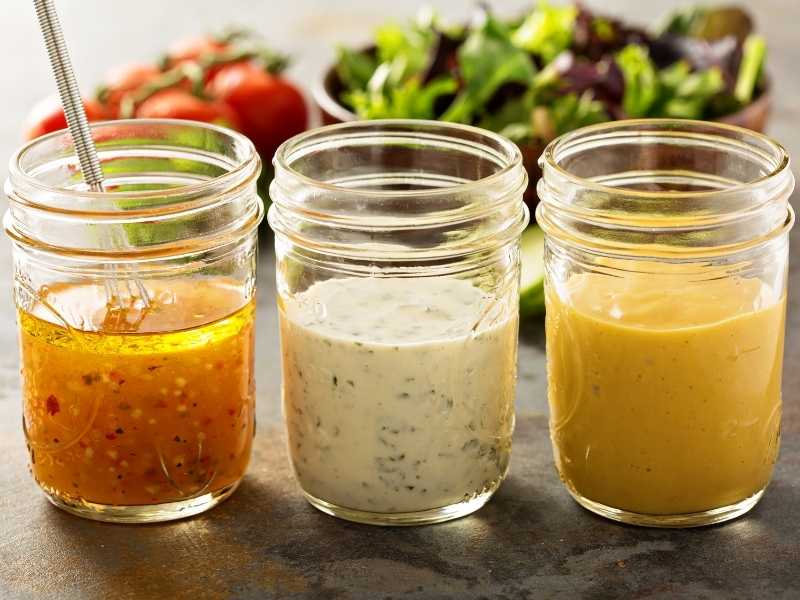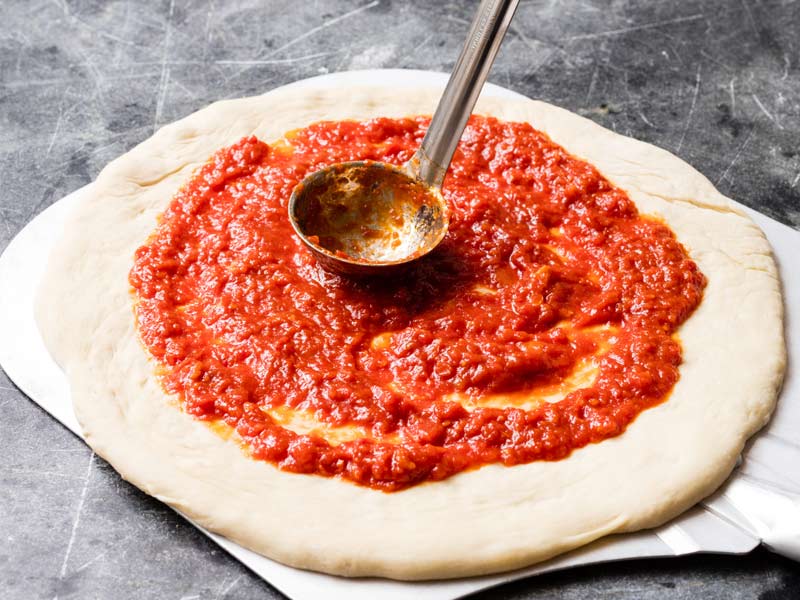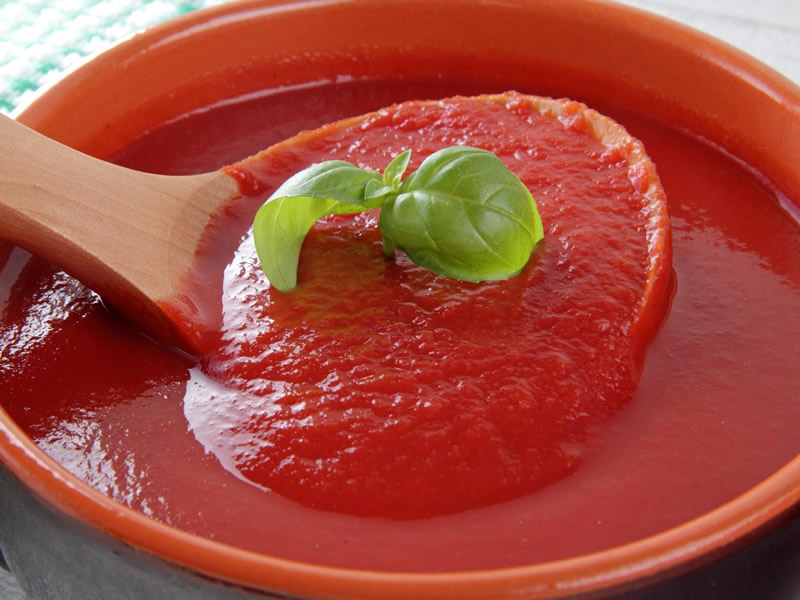The Art of Making Pizza Sauce from Tomato Paste: A Comprehensive Guide
Introduction:
Pizza sauce is an essential component that adds flavor and zest to the beloved Italian dish. While there are several variations, ranging from sweet to spicy, the base for most pizza sauces is tomato paste. Made from concentrated tomatoes, tomato paste offers a rich and concentrated flavor that, when transformed into a sauce, complements the cheesy and doughy elements of a pizza perfectly. In this article, we will delve into the process of making pizza sauce from tomato paste, exploring various ingredients, techniques, and best practices.
1. Understanding Tomato Paste:
Tomato paste contains a higher concentration of tomatoes compared to tomato sauce. While tomato sauce is typically cooked and seasoned, tomato paste is an intensified form of tomato puree, created by removing most of the water content from the tomatoes through a prolonged cooking process. Tomato paste offers a concentrated taste and smooth consistency, making it an ideal base for pizza sauce.
2. Ingredients:
To create a flavorful pizza sauce from tomato paste, a combination of ingredients can be used. Here is a list of key ingredients commonly found in traditional pizza sauces:
a. Tomato Paste: The star ingredient, tomato paste provides the base for the sauce’s taste and consistency. It is advisable to choose high-quality tomato paste for best results.
b. Herbs: Common herbs used to enhance the flavor of pizza sauce include basil, oregano, and thyme. These herbs can be used dried or fresh, depending on personal preference.
c. Garlic and Onions: Finely minced fresh garlic cloves and onions add depth and aromatic flavors to the sauce.
d. Olive Oil: Adding a drizzle of olive oil to the sauce helps create a silky and smooth texture while enhancing the overall flavor profile.
e. Seasonings: Apart from herbs, additional seasonings like salt, black pepper, dried chili flakes, and sugar (to balance the acidity) can be incorporated to achieve the desired taste.
3. Techniques and Methods:

a. Simmering Method: In this traditional approach, start by heating a pan on medium heat, adding olive oil, and sautéing minced garlic and onions until they turn translucent. Add the tomato paste, water, and seasonings, and allow the mixture to simmer on low heat for at least 30-40 minutes. This method allows the flavors to blend well and intensify.
b. Quick Method: If you are pressed for time, a quick pizza sauce can be prepared by mixing tomato paste directly with herbs, seasonings, and water. Although this method is less time-consuming, it may not yield the same depth of flavor as the simmering method.
c. Use of Flavor Boosters: Experiment with additional ingredients like Worcestershire sauce, red wine vinegar, or grated Parmesan cheese to enhance the taste profile of the pizza sauce. These flavor boosters add complexity and depth to the sauce.
d. Blending Technique: For a smoother-textured sauce, you can blend the sauce after it has finished simmering. This technique helps create a velvety consistency, allowing the sauce to spread evenly on the pizza dough.
4. Tips for Achieving the Perfect Pizza Sauce:
a. Balance the acidity: Tomato paste can be quite acidic, so it is crucial to balance the flavors by adding a small amount of sugar. This helps to counteract the acidity and bring out the naturally sweet flavors of the tomatoes.
b. Adjust thickness: Based on personal preference, the thickness of the sauce can be adjusted by incorporating additional water or keeping it concentrated. A thicker sauce provides a richer flavor, while a thinner sauce allows for easier spreading on the pizza dough.
c. Taste and adjust: Regularly tasting the sauce during the cooking process enables you to make adjustments and fine-tune the flavors. This ensures that the final product meets your personal taste preferences.
d. Storage and freezing: Pizza sauce can be stored in an airtight container in the refrigerator for up to a week. Alternatively, it can be frozen in smaller portions for future use. Freezing pizza sauce allows you to have a stockpile that can be defrosted and used whenever needed.
Conclusion:
Creating a delicious pizza sauce from tomato paste is a craft that requires a balance of flavors and careful attention to techniques. By using high-quality ingredients and experimenting with various seasonings, herbs, and additional flavor boosters, you can craft a pizza sauce that elevates your homemade pizzas to a new level of taste and satisfaction. Whether you choose to simmer it slowly or opt for a quick method, homemade pizza sauce made from tomato paste is sure to tantalize the taste buds and enhance your pizza-making experience.4. Tips for Achieving the Perfect Pizza Sauce:
a. Balance the acidity: Tomato paste can be quite acidic, so it is crucial to balance the flavors by adding a small amount of sugar. This helps to counteract the acidity and bring out the naturally sweet flavors of the tomatoes.
b. Adjust thickness: Based on personal preference, the thickness of the sauce can be adjusted by incorporating additional water or keeping it concentrated. A thicker sauce provides a richer flavor, while a thinner sauce allows for easier spreading on the pizza dough.
c. Taste and adjust: Regularly tasting the sauce during the cooking process enables you to make adjustments and fine-tune the flavors. This ensures that the final product meets your personal taste preferences.

d. Storage and freezing: Pizza sauce can be stored in an airtight container in the refrigerator for up to a week. Alternatively, it can be frozen in smaller portions for future use. Freezing pizza sauce allows you to have a stockpile that can be defrosted and used whenever needed.
5. Incorporating Authentic Italian Flavors:
a. San Marzano Tomatoes: To achieve an authentic and robust flavor, consider using San Marzano tomatoes, which are known for their natural sweetness and low acidity. While tomato paste is typically made from these tomatoes, utilizing them in other forms, such as canned tomatoes, can also enhance the taste of the pizza sauce.
b. Fresh vs. Dried Herbs: Although dried herbs are commonly used due to their longer shelf life, fresh herbs can elevate the flavors of your pizza sauce. Fresh basil leaves, for example, provide a fragrant and vibrant taste that complements the tomato paste beautifully.
c. Pecorino Romano Cheese: For an added layer of authenticity, sprinkle some grated Pecorino Romano cheese into your pizza sauce. This aged Italian cheese imparts a rich and slightly tangy flavor, enhancing the overall taste of the sauce.
d. The Importance of Quality Ingredients: To ensure an exceptional pizza sauce, source high-quality ingredients. Opt for organic tomato paste, fresh herbs, and premium olive oil. These ingredients not only enhance the taste but also contribute to an overall healthier and more flavorful pizza sauce.
6. Incorporating Unique Flavors:
a. Spicy Kick: If you enjoy a spicy pizza sauce, consider adding crushed red pepper flakes or a dash of cayenne pepper. These fiery ingredients bring heat and excitement to the sauce.
b. Smoky Flavors: For a smoky twist, experiment with smoked paprika or chipotle powder. These additions infuse the sauce with a unique and savory taste that pairs well with a variety of toppings.
c. Sweeter Profiles: If you prefer a sweeter pizza sauce, try adding a touch of honey or maple syrup. The sweetness complements the tomatoes and can balance out any bitterness.
d. Infusions: Exploring different infusions like roasted garlic or caramelized onions can add depth and complexity to your pizza sauce. These infused flavors create a memorable taste experience for your pizza creations.
7. Customizing Pizza Sauce for Different Pizza Styles:
a. Neapolitan Pizza Sauce: Neapolitan-style pizza is known for its simplicity and minimalist approach to toppings. The sauce used for Neapolitan pizza is typically light and tangy, with minimal seasoning. A combination of tomato paste, salt, and fresh basil is sufficient to create the traditional Neapolitan sauce.
b. New York Style Pizza Sauce: New York-style pizza sauce tends to be more savory and robust. Adding additional dried herbs like oregano and thyme, along with minced garlic, can enhance the savory profile of the sauce.

c. Chicago Style Pizza Sauce: The famous deep-dish pizza calls for a chunky and hearty sauce. For a Chicago-style pizza sauce, blend the tomato paste with crushed tomatoes or diced tomatoes, and let it simmer with herbs and spices for a thicker and chunkier consistency.
d. Mediterranean or Greek Style Pizza Sauce: Greek-style pizza often incorporates bold and tangy flavors. Consider adding a squeeze of lemon juice, a touch of white wine vinegar, and some Mediterranean herbs like rosemary and thyme to create a vibrant and zesty sauce.
8. Marketing Strategies:
a. Creative Menu Descriptions: When promoting your pizza, highlight the unique quality of your homemade tomato paste sauce. Emphasize that it is made with high-quality ingredients, crafted with traditional Italian methods, and offer a variety of flavor profiles.
b. Visual Appeal: Use high-quality images that showcase the vibrant colors of the sauce and its freshness. Photos of pizzas topped with your homemade sauce can entice customers to try your pizza creations.
c. Social Media Engagement: Leverage social media platforms to engage with your audience. Share recipe variations, tips, and behind-the-scenes footage of making your tomato paste pizza sauce. Encourage followers to share their experiences using your sauce, providing them with the chance to win discounts or freebies.
d. Collaboration with Local Businesses: Partner with local pizzerias or Italian restaurants to showcase your tomato paste sauce as a premium ingredient. Collaborative promotions and cross-marketing can help broaden your customer base.
9. Packaging and Distribution:
a. Shelf-Stable Jars: Consider packaging your homemade pizza sauce in shelf-stable jars, clearly labeling its premium qualities, such as organic ingredients, traditional craftsmanship, and unique flavor profiles.
b. Online Sales: Expand your reach by offering online sales of your tomato paste pizza sauce. Provide detailed product descriptions, package deals, and shipping options to attract customers outside your local area.
c. Wholesale Distribution: Establish relationships with local grocery stores, gourmet food stores, and specialty pizza shops to distribute your pizza sauce. Offering in-store tastings and demonstrations can create brand awareness and attract new customers.
10. Consumer Education:
a. Online Recipe Blog: Create a recipe blog on your website dedicated to educating consumers on various ways to use your tomato paste pizza sauce. Include recipes for traditional pizzas, as well as innovative options like pita bread pizzas or pizza-inspired pasta dishes.
b. Cooking Demonstrations: Host cooking classes or demonstrations where you showcase the versatility of your pizza sauce. Teach participants how to make different styles of pizza using your sauce and encourage them to explore new flavor combinations.

c. Collaborative Events: Partner with local culinary schools or community organizations to host events centered around pizza-making. These events can offer hands-on experience in making pizza sauce from tomato paste, allowing participants to appreciate the art of this culinary craft.
In conclusion, pizza sauce made from tomato paste is a versatile and essential component of a delicious pizza. By understanding the techniques, ingredients, and flavor profiles, you can create a unique and flavorful sauce that sets your homemade pizzas apart. Experiment with different herbs, seasonings, and flavor boosters to craft a sauce that suits your personal preferences and the specific style of pizza you want to create. Through effective marketing strategies, packaging, distribution, and consumer education, you can share your homemade pizza sauce with the world and establish a loyal following of pizza enthusiasts who appreciate the artistry behind your flavorful creation.









